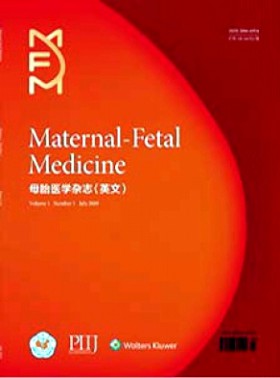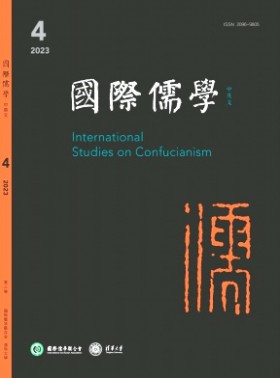前言:寻找写作灵感?中文期刊网用心挑选的英文报刊运用解释性翻译手段,希望能为您的阅读和创作带来灵感,欢迎大家阅读并分享。

英语外宣翻译不同于一般的汉译英,因为前者首先注重的是传播效果,其次译文必须清晰易懂,而后者一般侧重于忠实原文。一方面,外宣报道者不可低估外国读者或听众; 另一方面,也切勿高估国外受众对我国的了解水平。[1]( p91)有鉴于此,对于“中国味”特别浓厚的新闻内容,包括国俗词语( national or cultural words) ,外宣报道工作者首先应考虑的是译文一定要让外国人理解。所谓国俗词语,就是别的语言中无法对译的词语,或者说别的语言中很难找到与之完全对应的“等值词语”( equivalents) 。[2] 让人费解或不能理解的译文等于没译。为了帮助外国受众加深对中文的理解,文章认为,在报道有关新闻内容时,我们可以借鉴国外英文报刊常用的解释性翻译手段。 解释性翻译可分为音译法( transliteration) 、类比法( analogy) 、阐释法( interpretive approach) 等,现分述如下: 一、音译法音译法是解释性翻译中比较常见的一种,其一般结构为: 先将中文音译,并用斜体标出,然后用 that is 或 or 等引导后面的注释,或在括号内添加注解。例如《上海星报》对中国古代的“八音”就是采用这种方法予以解释的: [例 1]The ancient instruments called“Ba Yin”( eight sounds from instruments made of different materials) refer to the fol-lowing: jin( metal) ,shi( stone) ,si( string) ,zhu( bamboo) ,piao( bottle gourd) ,ge( leather) ,tu( clay) and mu( wood) . ( ShanghaiStar,March 10,2000) “八音”是中国非常古老的乐器,就是中国人也不太了解。例1 通过寥寥几笔的注释把其意思用英文基本讲清楚了。首先在“八音”后面把其意译放在括号内,接着将“八音”代表的八种音加以解释,即金、石、丝、竹、瓢、革、土、木,在每个“音”后面加上相对的英文注释,使读者一目了然,不管是中国人还是外国人都能看懂。再比如说“屏风”,也是国外没有的。对此,《上海星报》曾这样写道: [例 2]An elegant Chinese pingfeng,or screen,for example,was not a purely decorative piece of furniture in an old Chinesehome. The screen,which would always be solid enough not to be seen through,would double as a thing of beauty and a hidingplace. ( Shanghai Star,March 10,2000) 例 2 先在“屏风”的音译( pingfeng) 之后加了一个简单的意译( screen) ,但这是不够的,作者便在后面加上了它的功用 not to be seen through,a thing of beauty and a hiding place,这种对“屏风”的解释就是全方位的。又如“坐月子”这一极具中国特色的习俗,不经一番解释难以令外国人理解。《中国日报》是这样解释的: [例 3]Zuoyuezi refers to a Chinese tradition that women who have just given birth should rest for about a month. In ancienttimes,women usually had home births,so their yuezi( or one month) was spent at home too. ( China Daily,July 8,1996) 例 3 对何谓“坐月子”( zuoyuezi) 作了言简意赅的音译和注解,还针对其中的关键词“月子”的字面意思作了解释,使这一极具民族性的文化词( culturally - loaded words) 也为世界所了解。 可见,在一定程度上,音译是一种科学的、有效的翻译方式。具体说来,音译不仅可行,而且还有许多优点。首先,音译既保留了中华文化的特色,又便于“高保真”地传播“中国味”特别浓郁的国俗词语,这是对本土文化的尊重,正如英国翻译理论家彼得• 纽马克( Peter Newmark) 在 Approaches to Translation 一书中所言: “But generally the most favoured proce-dure for a recently noted term peculiar to a foreign culture( given national pride,greater interests in other countries,increasedcommunications,etc. ) is likely to be transliteration,coupled with discreet explanation within the text. If the term becomes wide-spread it may be adopted in the TL( target language) . This method is the appropriate sign of respect to foreign culture.”[然而,对于最近引起人们关注的某些外国文化中的独有词语( 鉴于民族自豪感、对他国愈发浓烈的兴趣、日益增加的交流) ,最喜用的处理方式多为音译,并在文本中辅以审慎的阐释。若该词得以广为流传,则有可能为目标语言所采纳。这种译法标志着对外国文化恰如其分的尊重。][3]( p83)例如,英语中的 kung fu( 功夫) ,tai chi chuan( 太极拳) ,ginseng( 人参) ,mahjong( 麻将) ,yangko( 秧歌) 等词就体现了浓郁的中国特色。反之,不恰当的翻译会让文化缩水,并可能歪曲、模糊原义。其次,音译符合语言的实用性原则,简洁上口,便于交流和传播; 而且音译保留了原语的声音,使得原语和译语的语音保持一致,这样,外国读者在接触到了“中国味”的音译词时,可以更直接地融入中国文化。 二、类比法 有些中国传统的事物很难解释清楚,但与外国人所熟悉的事物又有些近似,若采用类比法加以说明,很容易使外国读者在头脑中产生一种联想,从而提高对外传播的效果。例如,中国传统戏剧作品中的人物“梁山伯与祝英台”、“济公”和“西施”可用类比手法分别译为“Chinese Romeo and Juliet”,“Chinese Robin Hood”,“Chinese Cleopatra( 绝代佳人) ”。同样,我国的旅游胜地苏州以及由影视界专家评选产生的金鸡奖也可分别译作 Suzhou,or China’s Venice 和 the GoldenRooster Award,or the Chinese Oscar。又如中国著名京剧表演艺术家梅兰芳,并非为所有的外国读者所熟知。为此,《上海日报》曾这样写道:#p#分页标题#e# [例 4]During its( Peking Opera) heyday,between the 1920s and 1940s,Peking Opera’s leading performers,topped by MeiLanfang,had as many fans in China as Elvis Presley had in the US of the 1950s. ( Shanghai Daily,March 10,2000) 例 4 把梅兰芳比作西方读者十分熟悉的美国歌王“猫王”( Elvis Presley) ,一下子便拉近了与外国读者的距离。又如在上海,南京路、淮海路等主要商业街早已盛名远扬,但昔日上海老庙“城隍庙”正门前的“庙前大街”( 现为“上海老街”) 却鲜为人知。《上海星报》的记者这样写道: [例 5]Forget Nanjing Road and Huaihai Road. Up to the late 19th century. Shanghai’s busiest street was Miaoqian Dajie,orIn - Front - of - the - Temple - Street referring to its location adjacent to the City God’s Temple. ( Shanghai Star,September 28,1999) 在这种类比手段的引导下,外国读者很容易在头脑中形成一幅当前“庙前大街”的繁华景象。 再如,几年前,日本二战老兵东史郎( Azuma) 发表了揭露南京大屠杀( the Nanjing Massacre) 罪行的日记。《上海星报》上的相关报道这样写道: [例 6]Azuma compared the Nanjing Massacre by the invading Japanese troops to the Holocaust by the German Nazis to theJews.“These two were the most inhuman tragedies during the Second World War. ”said Azuma. ( Shanghai Star,March 7,2000) 例 6 提到了东史郎将南京大屠杀比作二战期间德国纳粹对犹太人的种族清洗。使用这个类比,使南京大屠杀的性质与外国人头脑中已有的印象联系起来,即这两次大屠杀是二战期间最惨绝人寰的悲剧( These two were the most inhu-man tragedies during the Second World War) 。接着记者还提供了南京大屠杀的背景情况: [例 7]In a few weeks after the invading,Japanese troops captured Nanjing,then the capital of China,in December 1937,they killed more than 300,000 defenseless civilians and unarmed soldiers and raped more than 80,000 women between the age of7 and 70. ( Shanghai Star,March 7,2000) 例 7 不仅提供了关于南京大屠杀的详细资料,还从受害者的数量和身份中透露出日军的暴行,与史东郎的话遥相呼应,足以震颤西方读者的心灵。 三、阐译法 在解释性翻译中最为“到位”的可以说是阐译法,或曰“背景阐释”( background interpretation) 。通过背景叙述,文章内容得以充实,报道本身也显得有血有肉。如果不作解释,不提供必要的背景信息,外宣报道对外国读者来说就失去意义了,同时也失去了传播中国文化的良机。当然,阐释与否,各有利弊。一经解释,就可能显得不够简洁,但是“内容为王”应该是首选的策略。如在报道“菜篮子工程”时,不妨除了直译 Vegetable - Basket Project 外,还可进一步解释为 Non- Staple Food Supply Project,这样处理就能使外国读者较全面地理解这一政策的内涵。又如,有关影视新闻报道中时常出现“第五代导演”和“第六代导演”这两个新名词。何谓“第五代导演”和“第六代导演”,恐怕许多中国人都弄不明白,若仅译作 the fifth - generation directors 和 the sixth - generation directors,会令外国读者十分费解。《中国日报》和《21 世纪英文报》为此分别作了一番解释,值得借鉴: [例 8]Tian( Zhuangzhuang) was awarded for contributions to film,…Tian,46,director of “On the Hunting Ground”( 1985) ,…He is one of the fifth generation of directors in China,which refers to a group of talented directors who graduated fromBeijing Film Academy in the early 1980s,including Zhang Yimou and Chen Kaige. ( China Daily,December 16,1998)HONG KONG———It’s true that the latest generation of Chinese film directors still cherish the idea of chasing an Oscar or aGolden Palm. It’s also true that winning awards would be fine,but box office is more important.…China’s latest wave of directors,the so - called Sixth Generation from the Beijing Film Studio system,is eager to find finan-cing for films to compete with Hollywood’s top offerings.…Unlike the fifth - Generation directors bent on chasing awards,the Six - Generation are here to entertain people and earnmoney. ( 21st Century,December 7,2000) 上述例证中的背景注释,言简意赅地把中国电影界的“第五代导演”和“第六代导演”介绍给了外国读者,有助于提高对外传播的清晰度。我国传统民俗文化中的“压箱底”是独特的文化现象,英语报刊又是如何予以表达的呢? 请看英语报道中的实例: [例 9]In feudal China,every family hid something secret at the bottom of a wooden chest,euphemistically known as the“trunk bottom”.Children were not permitted to know what it was.But when one day the family’s daughter was going to be married,all would be revealed. Her mother would open the secrettrunk and draw out two figurines engaged in an act of coitus to give her daughter some rudimentary sex education. These figurinesformed part of her dowry. ( Shanghai Star,April 24,1999) #p#分页标题#e# 例 9 中的解释性翻译将“压箱底”的来龙去脉、功用以及特殊的文化含义都一一讲清楚。第一段将“压箱底”解释一番; 第二段与第三段形成一个对比,说明此物非同寻常,是女儿嫁妆中最隐秘的部分。这样的背景叙述不仅使得报道容易理解,而且好看、耐看。 同样,科举制度作为中国古代一种选拔官员的方式源远流长,但对于外国人来说,这种制度是非常陌生的,因此加上一些背景介绍是必不可少的: [例 10]China’s ancient imperial examination system lasted from 587AD to 1905.The imperial exams were an important instrument for the government to select capable officials and were held on differentlevels. The lowest rung was the county exam,followed by the provincial exam. At the top was the palace exam. Presided over by theemperor himself. Those who performed best on each level were either promoted or awarded an official post. ( Shanghai Daily,March 17. 2000) 例 10 首先对科举制度的年代作了介绍,然后介绍了科举制度的功用( for the government to select capable officials) ,接着介绍了科举制度的级别,最后提到了奖励的方式,为国外读者提供了有关科举制度详细的背景介绍。再如,近年来人们十分热衷的木兰拳,是一项独具中国特色的体育运动项目。怎样将它介绍给国外受众呢? 《上海星报》作了如下阐释: [例 11]The legend of Hua Mulan was made famous in the Disney cartoon of the same name. Hua Mulan was an elegantwoman of the East Jin Dynasty( AD317 - 420) immortalized in an anonymous poem,who disguised herself as a man so she couldgo to war to protect her country.The name Mulanquan( Mulan martial art) is taken from the heroine’s name. ( Shanghai Star,September 21,2000) 例 11 从一个典故说起,引人入胜,而且将它与迪士尼动画片联系起来,一下子拉近了外国读者与花木兰这个中国古代人物的距离,随后引入正题“花木拳”,并作了简洁明了的解释。可见,在报道有关中国文化等方面的新闻内容时,作一些适当的背景解释是必不可少的。这种背景解释不仅能提高外宣报道的效果,将准确的信息传递给不太了解中国的受众,还能使他们更深入地了解中国,消除偏见与误解。 外宣报道不同于中文报道的简单英译,这并不是说不需要将有关报道译成英语,关键是如何做到正确清晰,以增强传播效果。外宣报道中的翻译不应是机械的语言文字的翻版。譬如在编译对外稿件时,怎样避免使用难懂的行话( jar-gon) 和使用外国人头痛的套话( stereotyped expression) ? 怎样译好汉语中丰富的典故和谚语? 鉴于一般外国受众对中国了解甚少,我们在外宣报道中翻译历史事件、地理名词、风俗、机构名词等方面的词语时,应尽可能地予以简单的说明、解释,并有机地融入译文之中。 例如,“解放前”、“解放后”这两个最常见的词汇,一般外国人不熟知,他们经常看到或听到的是 before/after the com-munist takeover( 共产党接管之前 / 后) 或 before / after the communist victory( 共产党胜利之前 / 后) 之类的词汇,而我们又不宜沿用。如将“解放前”和“解放后”逐字译成 before liberation 和 after liberation 则显得不妥,不如译成 before/after thefounding of the People’s Republic of China( in 1949) 或 before / after the founding of new China( in 1949) ,这样显得更清晰易懂,也较客观。 又譬如,在外宣报道中如出现人名,最好不要简单地译成汉语拼音,不妨加以简单说明,如“巴金”、“曹禺”就不妨译作 famous Chinese writers Ba Jin and Cao Yu。就连“北京”、“上海”、“春节’之类的词汇在外宣报道中也经常被译为 thecapital city of Beijing,the largest industrial city of Shanghai,the Spring Festival 或 the lunar Chinese New Year 等形式。外宣报道翻译中的这些解释,在我们看来,似乎既啰嗦又欠完整准确,但对西方的受众来说很有必要。之所以费这么大的劲,归根到底是为了使外宣报道清晰易懂,帮助受众更好地理解新闻内容,从而达到良好的传播效果。 当然,背景解释的应用也不是越多越好,尤其在外宣报道中还应注意翻译技巧和对读者认识能力的考察,避免走入误区。首先,避免对词语的生硬翻译,背景交代也需要文采与匠心。背景交代作为新闻的有机组成部分,直接影响整篇新闻的质量,它不应止步于生硬的介绍,应努力根据受众的理解能力加以巧妙运用。若在外宣报道中出现“孔子”这一中国历史人物时,用 Chinese philosopher,educator and founder of Confucianism in the late Spring and Autumn period 来解释,就不如 Chinese philosopher and educator whose life predated Socrates and Aristotle 来得生动,更容易为西方受众所接受,毕竟苏格拉底和亚里士多德是他们所熟悉的人物。其次,切忌贪大求全,力求简约凝练,摆正主仆关系。报道的新闻事实是文章的主体,背景材料只是辅助,它们之间是主仆关系,不能颠倒,否则便会喧宾夺主。所以,有人形象地将新闻事实与背景材料比作“红花与绿叶”,就是这个道理,说明、背景介绍要简明扼要,不可冗长繁琐,更不要贪大求全,力求“窥一斑而见全豹”。再次,贴近外国受众并不等于放弃本国的语言文化特色。在迎合外国受众习惯时,注意度的把握,应在可能接受的限度下,尽可能地传播我国民族的优秀文化。比如对外介绍儒家经典《易经》时,笔者就认为将之翻译为 The Bookof Changes,不如直接音译为 I Ching,[4]再酌情加上必要的背景解释“an ancient Chinese book of divination,consisting of 64symbolic hexagrams taken to indicate wise courses of action”[Webster New World Dictionary of American English( Third CollegeEdition) ],或阐释为“a classic of Confucianism,comprised of two kinds of symbols—64 diagrams and 384 basic lines,which re-present both the unity and opposition of the natural world and social life”。[5]( p477)毕竟外宣报道的一个重要目的是展现本民族的个性,如果把这些都丢失了,可能是一种悲哀吧。#p#分页标题#e# 综上所述,英语外宣报道的一个突出特点就是它是以英语制作的,而不是汉语。只要懂英语就能做外宣报道的英译工作,这是对英语外宣报道工作的误解,缺乏对这项工作的性质、意义、难度及特点的了解与研究。英语外宣报道有别于单纯的汉译英,并非对汉语新闻的逐字英译,两者不能简单地等同视之。外宣报道成功与否,首先取决于传播效果,其次才是确保译文清晰易懂。为此,为了使报道能适应国外一般读者( lay reader) 的接受能力,我们在英译过程中有必要时刻牢记“从读者对象出发”( readers - oriented) ,要设身处地地为他们着想,通过不厌其烦的解释,帮助他们读懂、看懂、听懂和理解我们的新闻。[6]( p119)通过解释性的翻译,力求给国外受众提供易于接受的译文,从而最大限度地提高传播效果。



